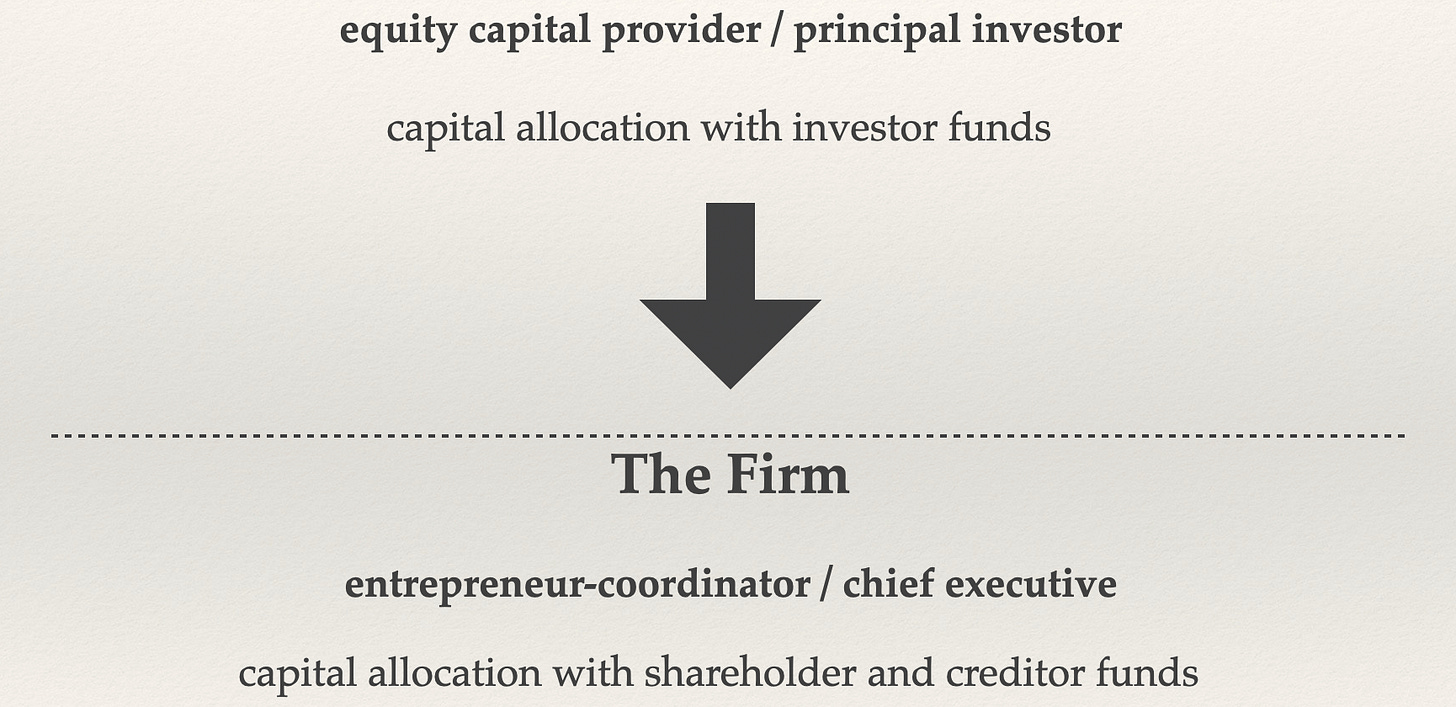The Impact of Technological Change on the Firm Boundary
Technology and regulation are the two principal forces which shape and re-shape industries
In a landmark paper titled The Nature of the Firm published in 1937, then-26 year old economist Ronald Coase addressed the question of why firms exist. “Outside the firm, price movements direct production, which is coordinated through a series of exchange transactions on the market. Within a firm, these markets transactions are eliminated and in place of the complicated market structure with exchange transactions is substituted the entrepreneur-coordinator, who directs production. It is clear that these are alternative methods of coordinating production. Yet, having regard to the fact that if production is regulated by price movements, production could be carried on without any organization at all, well might we ask, why is there any organization?”
Coase, who went on to win the Nobel Prize for economics in 1991 for his work as the pioneer of the theory of the firm, posited that the transaction costs of doing business in a market economy necessitated that individuals should organize themselves under the rubric of a firm. The world has changed unrecognizably since Coase developed the theory for why a centrally-planned institution like a firm exists in any market economy. The principal forces affecting the size and structure of the firm are government policy and technology. The Coasian lens of transaction costs helps explain why conglomerate firm structures are commonly found in emerging and frontier markets – wherever government policy-making is a powerful exogenous force and the rule of law is weak, it makes sense for firms to integrate vertically or expand corporate scope by entering new industries.
Over the last 25 years, technology too has had dramatic effects on the nature of the firm. Technological changes strike at the heart of possibly the most important strategic decision made by the capital allocator, christened the “entrepreneur-coordinator” by Coase. This is the decision of what to buy and what to build. Stated differently, technology has always been a critical determinant of setting and resetting the boundary of the firm, and momentous changes over the last three decades have hastened the speed at which this boundary shifts.
Shifts in the firm boundary inevitably lead to shifts in the value captured by the different actors in an industry. The rise of e-commerce undercuts both offline retailers and legacy brands. “Direct-to-consumer” means that even small, niche brands are able to gain global distribution without having an offline footprint. Retailers, product marketers and manufacturers who were operating in an equilibrium deemed to be settled by the dominance of organized retail are being disrupted by the emergence of new marketing and distribution channels enabled by the mobile internet that have made certain segments far less profitable or even irrelevant.
The media business has felt the impact of shifting firm boundaries even more dramatically than retail. In the old television entertainment business model, studios created content that broadcasters would licence, offsetting content acquisition costs with advertising. Now, technology has shifted the firm boundary to fuse content production and distribution, where consumers are willing to pay for an advertising-free viewing experience. In print media, content production and distribution that were both controlled by media houses have been disaggregated, as consumers read individual articles rather than bundles curated by professional editors that are distributed and discovered through channels the content producers have almost no control over.
Applying Coase’s insight, the transaction cost that caused the emergence of a firm in the industry value chain can be reduced or eliminated by technology. When this happens, the “entrepreneur-coordinator” or capital allocator of the firm must act to re-position the firm in the new context. Viewing technology as a force that reduces transaction costs and shifts the firm boundary is a powerful way to anticipate how an industry might change in response to innovation. Armed with this understanding, an investor can make better judgments about which businesses will accrue market power and which segments stand to lose.


